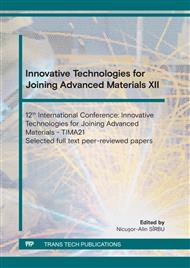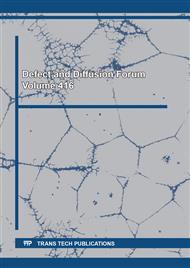p.3
p.11
p.21
p.31
p.43
p.55
p.67
p.79
p.87
Friction Stir Welding in Inert Gas Environment (FSW-IG) of AZ31B Magnesium Alloy
Abstract:
Friction stir welding is an area of interest within ISIM Timisoara, several research projects that have addressed this issue being carried out. At ISIM the research started with the approach of FSW welding of some aluminum alloys (as similar and dissimilar materials) and later extended to other types of non-ferrous metallic materials (magnesium, titanium, copper alloys) and different types of steels respectively. New methods / possibilities of application of the FSW welding process were also researched. The paper presents results obtained by ISIM Timisoara within an ongoing national research project regarding the friction stir welding in inert gas environment (FSW-IG) of the AZ31B magnesium alloy. The experimental research aimed to perform a comparative analysis between the FSW-IG welding and the classic FSW welding for AZ31B magnesium alloy, in the same working conditions in terms of welding equipment, welding tools and technological process parameters. The obtained results show that the application of FSW-IG welding compared to the classic FSW welding brings benefits in terms of weld surface appearance, mechanical strength, elongation at break and behavior to the static bending tests.
Info:
Periodical:
Pages:
21-29
Citation:
Online since:
May 2022
Authors:
Price:
Сopyright:
© 2022 Trans Tech Publications Ltd. All Rights Reserved
Share:
Citation:



